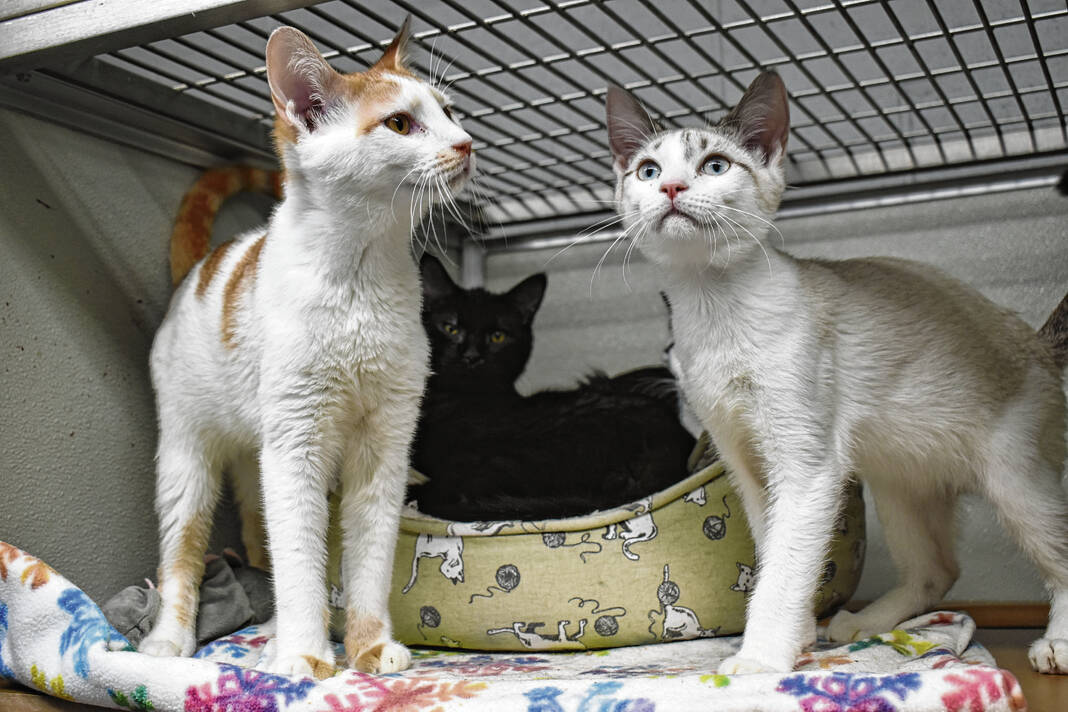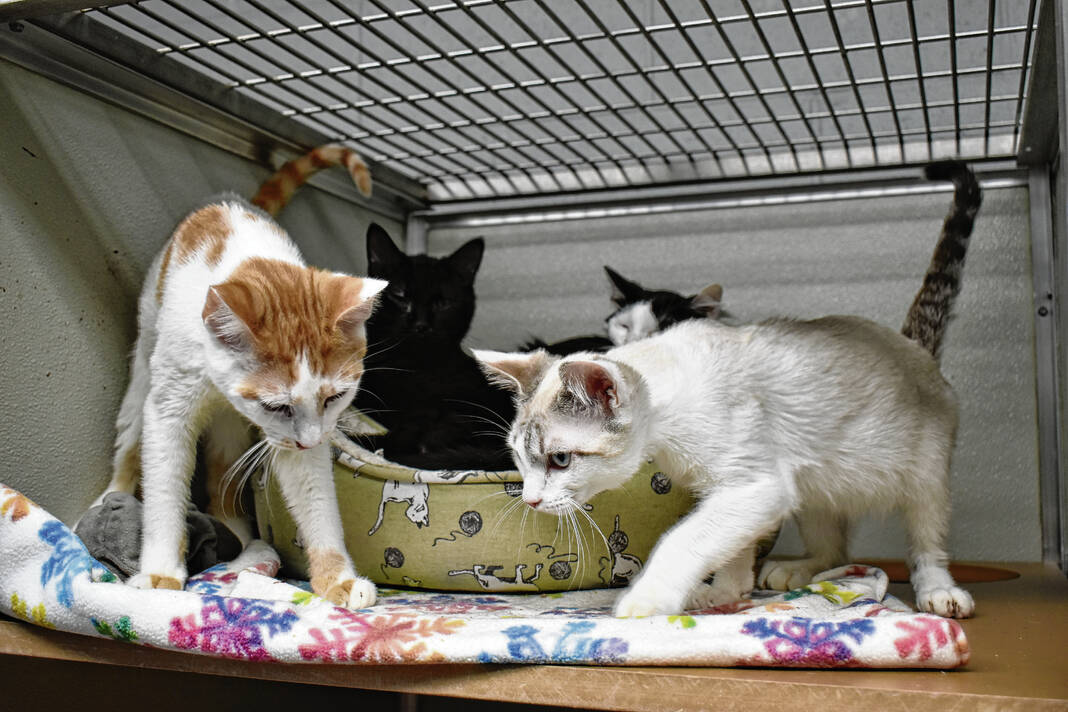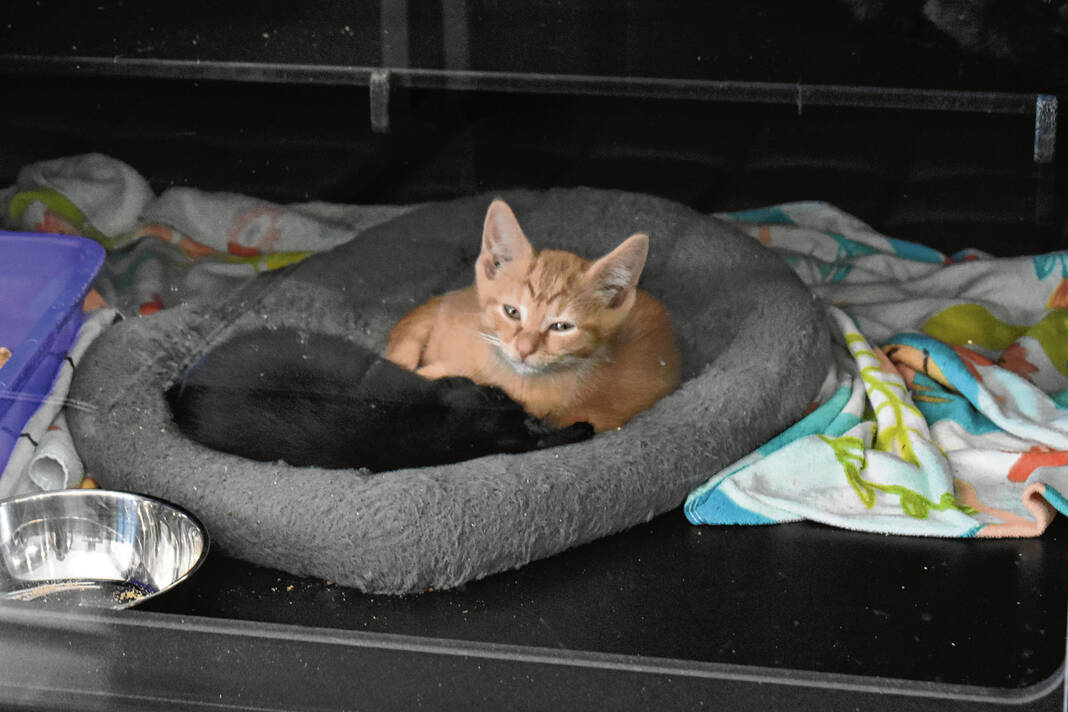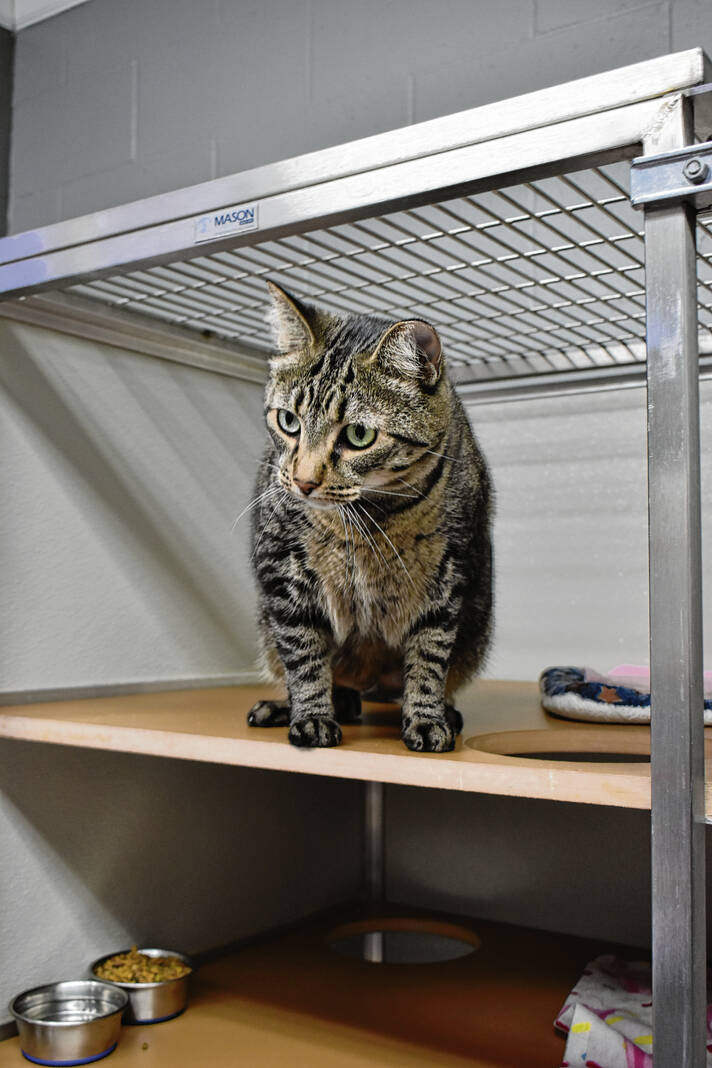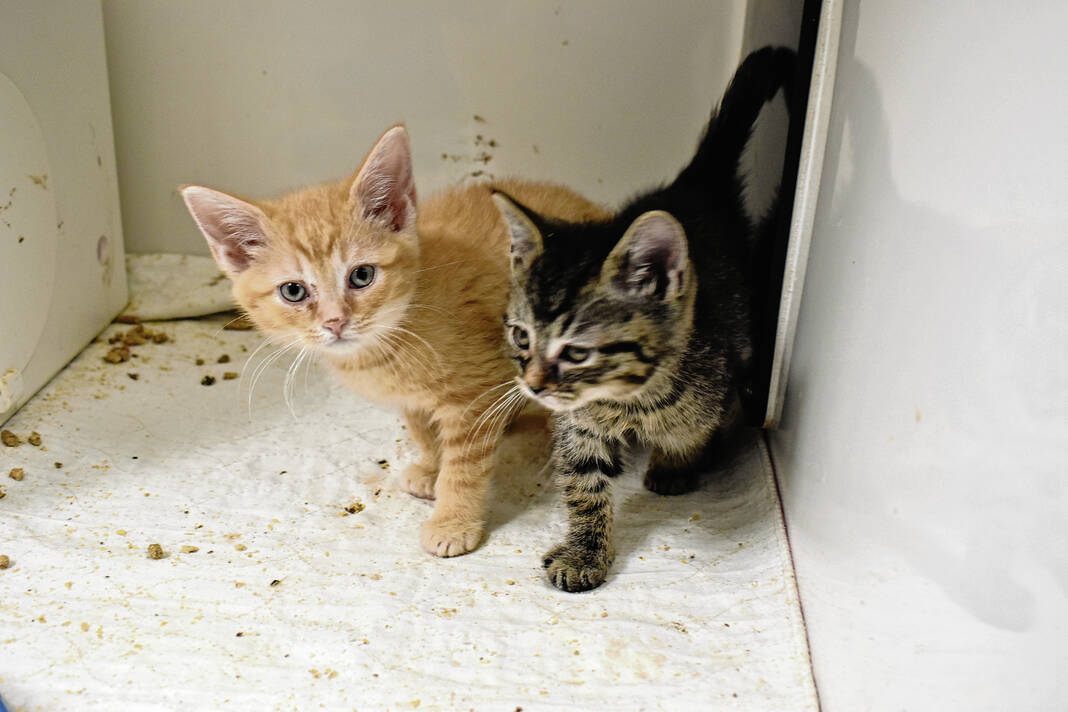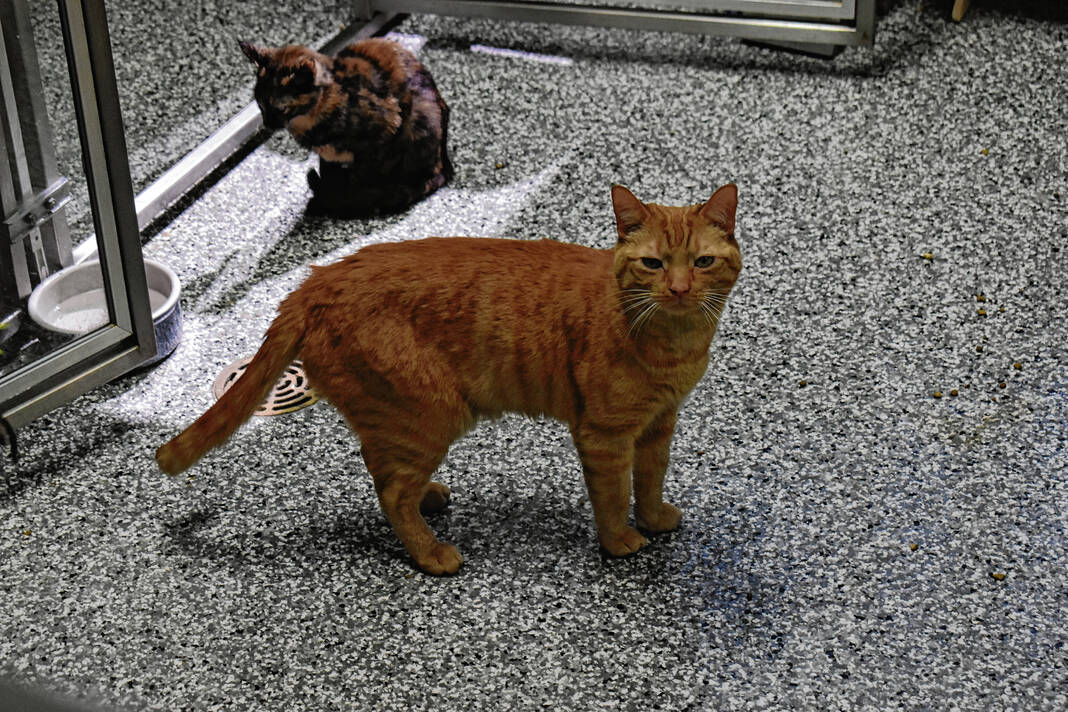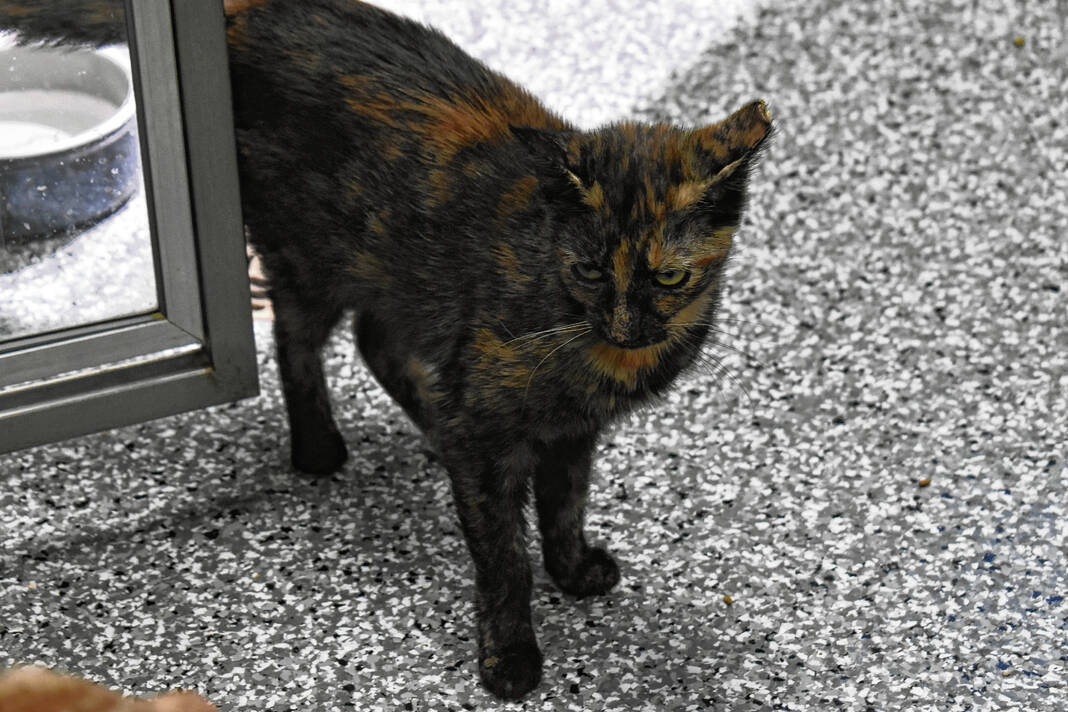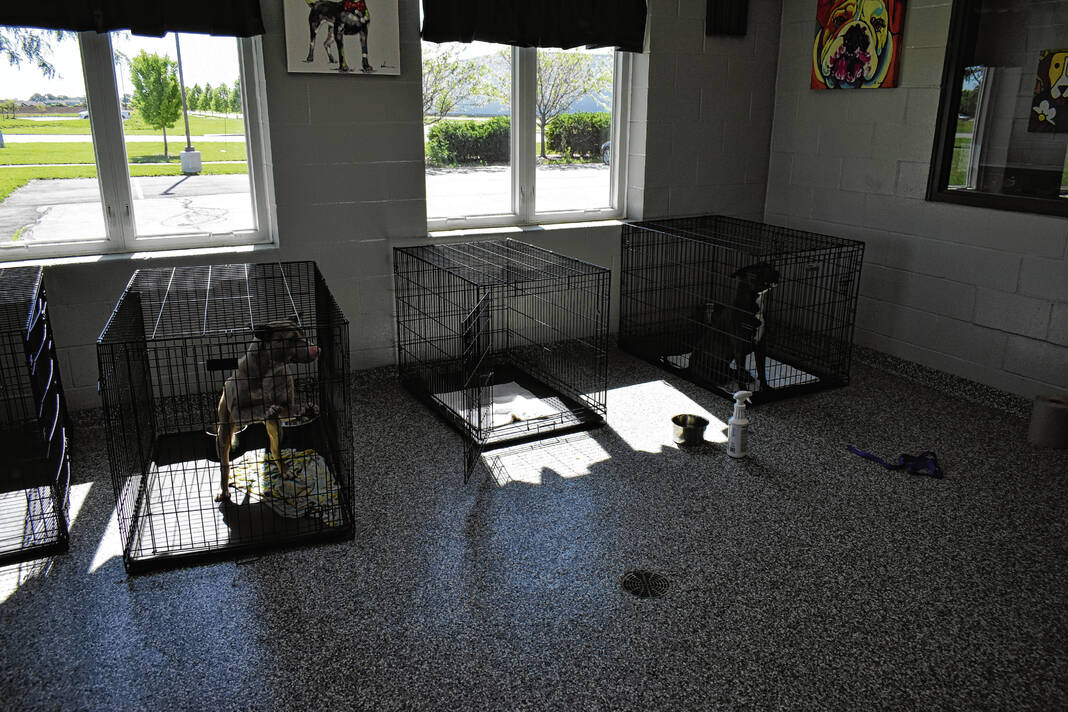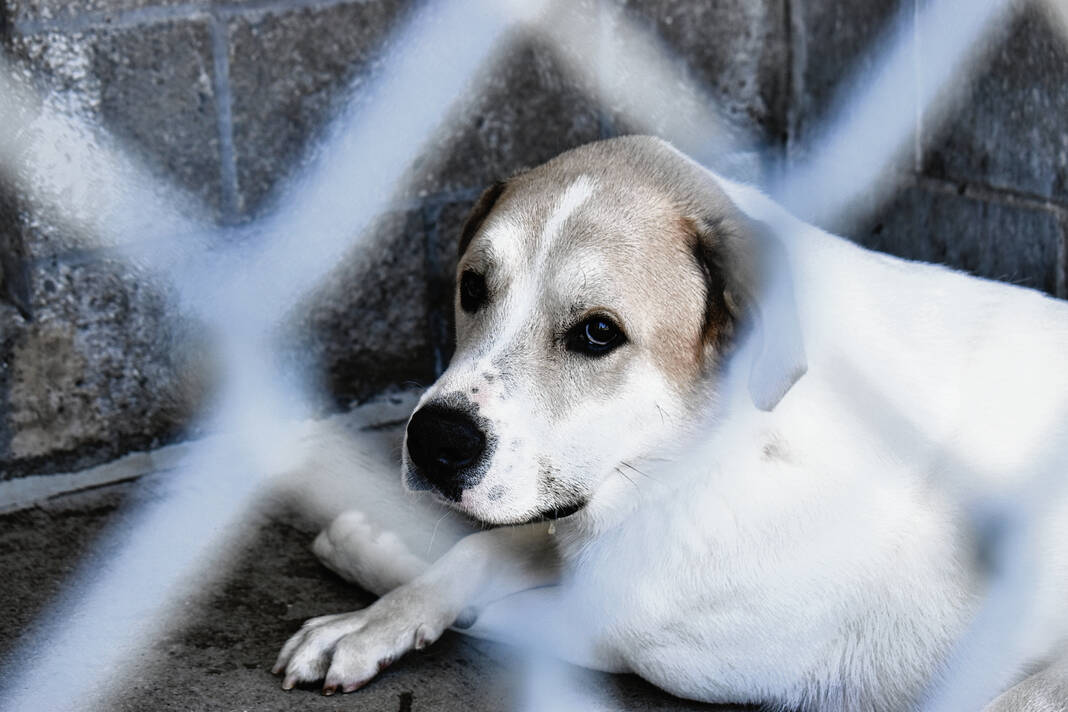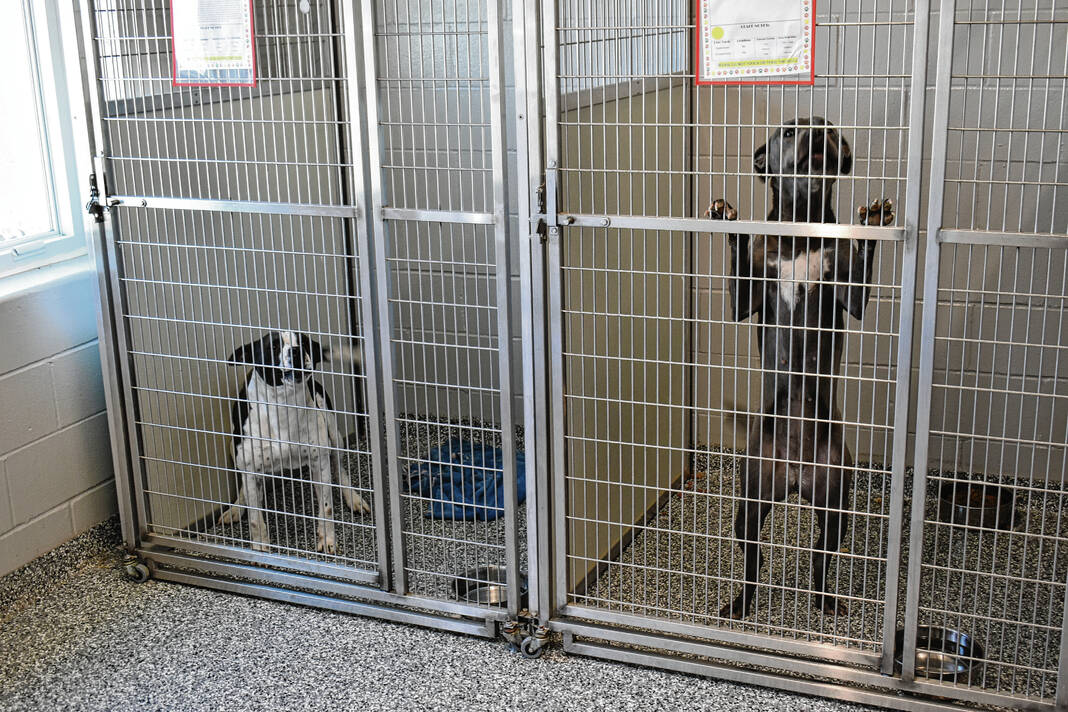
Sir, a 2-year-old Anatolian/Great Pyrenees mix, sits inside a kennel following a veterinarian appointment Wednesday at the Johnson County Animal Shelter in Franklin.
Noah Crenshaw | Daily Journal
A burgeoning crisis at the Johnson County Animal Shelter has left staff with a dreaded option.
If more animals don’t leave the shelter soon, more than a dozen could be euthanized. The community can help avoid this, but the clock is ticking.
The shelter is at 140% capacity — an unprecedented crisis. The sheer number of abandoned, abused and neglected animals seeking sanctuary has overwhelmed the facility’s resources, said director Cari Klotzsche.
Without intervention from the community, shelter staff will be forced to euthanize up to 15 animals just to create space for the continuous flow of new intakes, Klotzsche said. Shelter staff asking people to adopt, foster, volunteer, donate or spread the word about the situation to help.
Current status
The animal shelter is overfilled with dogs, cats and kittens. There are 48 dog kennels at the shelter, but right now they have about 70 dogs in their care. Dogs are living in pop-up kennels located in hallways, Klotzsche said.
For cats, they have space for 100, but currently have 190 in their care. Most of the cat population is kittens who are too young to be fixed and adopted, she said.
Cats and kittens are not just in their usual enclosures at the shelter. Some kittens are living in rooms usually used for potential adopters to meet their animals, others are inside reptile and small animal spaces that have been converted for them.
To compare to another facility, Indianapolis Animal Care Services had 108 cats in their care on Tuesday, Klotzsche said. That facility is 10 times the size of Johnson County’s, she said.
“So that tells you where we’re at. We’re just drowning in cats,” she said.
There are, at most, two to three people on staff to take care of all of those dogs, for example. Taking care of them isn’t just cleaning their kennels, but also taking them for a walk, playing with them and helping them with medical needs, like vaccines or flea baths. Some animals have skin conditions, requiring staff to give them medicated baths, Klotzsche said.
Kittens require a lot of work too. As they learn to eat, they are messy and often have to be bathed, she said.
“They’re trying to bathe the 100 kittens because they’re all covered in filth, and there’s just not enough time in the day to say the least, ” Klotzsche said.
The cause
The situation at the shelter is a result of several things.
Over the last few years, there have been fewer adopters, leading to longer stays for animals. At the same time, more and more people are opting to surrender their animals to shelters.
For the last year, the number of animals at the shelter has led to a pause in owner surrenders — when someone calls and tries to surrender their animal to the shelter. Because the shelter has no room, they put those trying to surrender animals on a waitlist, only accepting animals if there is a risk to someone’s safety, or if a space happens to open up, Klotzsche said.
“Unfortunately, we haven’t had space for a year and it’s only getting worse,” she said. “So we’re turning away owner surrenders and telling them we have to care for the strays.”
In some cases, they also show pictures of the animals to nearby rescues to see if they want the animal. If they do, then the shelter will take it in because they’ll have a place for it to go, she said.
Another part of the problem is overflow from Indianapolis. This week, multiple people have called Johnson County saying they contacted Indianapolis about taking their pets to their shelter but Indianapolis officials reportedly told them to go to Johnson County instead, Klotzsche said.
In one incident that occurred last weekend, an Indianapolis woman called Johnson County asking if the county could take her three dogs. Local officials told her they would have someone call her on Monday, but they were not taking owner-surrenders and she lived out of county, Klotzsche said.
The same woman then called Johnson County Animal Control, which is connected to the animal shelter, saying she found three stray dogs in a Franklin neighborhood. Those dogs were picked up and later given back to the woman micro-chipped, as her number was already on file, and the county told her to take them to Indianapolis, Klotzsche said.
“I know that Indianapolis is in a situation greater than what we understand and I feel for them,” she said. “However, we are in our own situation.”
Staff morale
The situation isn’t just bad for the animals. It’s bad for the staff too.
Staff members have been struggling as it’s been a “never-ending” cycle with overcrowding, Klotzsche said.
“You think you get a breather, and then we had I want to say 20 dogs come in over the course of four days ..,” she said. “I can literally fill 48 kennels, that’s all I have.”
Three years ago, if the Johnson County facility had 20 dogs in the building it was considered a lot. Now they have 70, plus animals that have been put in foster homes, she said.
These animals include puppies who need foster homes because they’re not old enough to be fixed, and dogs like Sir, a 2-year-old Anatolian/Great Pyrenees mix with a hip leg deformity that will require special attention. Sir has been at the shelter for more than a year.
A shelter environment is not good for these animals. Puppies are going to grow up in a place where they’re not going to learn manners, learn how to be a puppy and learn the important things they need to be good, well-behaved dogs as adults, Klotzsche said.
“We need people to come in and take some of these dogs,” she said. “The fosters and the volunteers are the highest need we have because, if not, we’re going to become a kill shelter quickly, she said.
Euthanizing animals to make space is the last option officials are considering, and they’re still hoping to avoid it.
Right now, the county’s euthanasia rate is around 9%, which is “really low” for a municipal shelter, Klotzsche said. The facility could technically be considered a “no-kill” shelter with a rate that low, she said.
However, without relief, this number will jump to 18%. This will end more than 15 years of work to not be a kill shelter, Klotzsche said.
“We haven’t euthanized for space. We haven’t euthanized just to euthanize. It’s always been the animals super sick or have behavioral issues,” she said.
The dogs that would be euthanized wouldn’t be aggressive or sick dogs, but animals who are pets and animals who escaped from home and were never claimed. They’re nice dogs, Klotzsche said.
“I don’t feel like that’s doing any justice to the county, to the staff or to the animals,” she said. “So we’re choosing not to do that, in hopes that the community will step up and say, ‘We’re here to help.’”
How to help
One of the ways people can help right now is by fostering animals. Staff will give people all the supplies they need — food, kitty litter, toys and more — until they’re ready to be fixed or adopted out, Klotzsche said.
“There’s people out there that love animals, but they can’t afford to care for an animal. They can’t afford food. They can’t afford vaccines, [but] they can foster,” she said.
With fostering, the animals will also be vaccinated by the shelter. Fostering will also give the animals a temporary home, which is beneficial to not only the overcrowded shelter, but also to the animals, Klotzsche said.
People can also volunteer at the shelter, whether it be walking and socializing with animals to helping clean. The shelter has some volunteers who come in regularly, but more are welcome to help offset the load.
Someone who maybe doesn’t want to spend time around animals could help with the laundry, for example, Klotsche said.
“Our laundry rooms are piling up because we’re falling behind on the work,” she said. “Just anything that someone is willing to do, we would love for them to come in and help us.”
Of course, one of the best ways to help is to adopt animals from the shelter. Staff recently updated their adoption forms for the first time in several years, streamlining what was a large packet down to a one-page sheet with the most important information, including contact information and the type of animal desired, Klotzsche said.
While the application has been trimmed down, the rest of the process remains the same. Appointments are preferred so staff can have the animals ready for potential adopters, she said.



